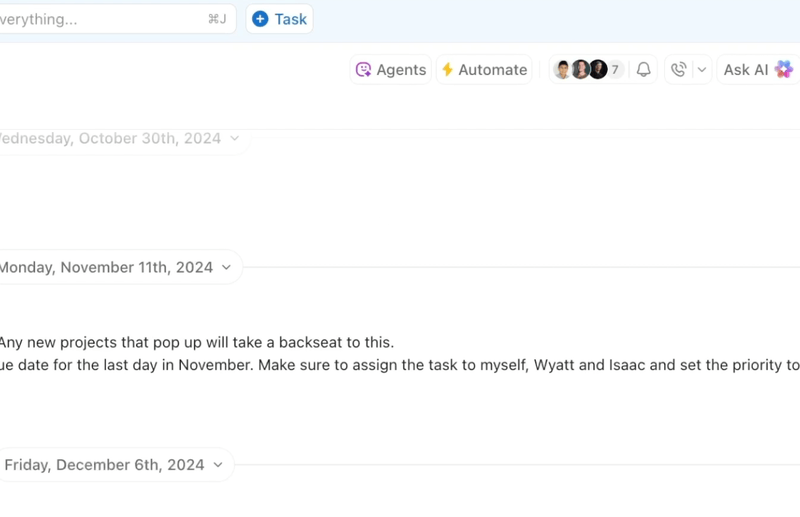Ever clicked a link to a crypto project on Telegram? Probably not—most people assume it’s a scam. That’s the challenge: earning user trust. Web2 ads struggle here. They invade privacy, rely on cookies, and feed your data to Google and Meta.
Web3 advertising flips the script. Users control their data, choose which ads to see, and get rewarded for taking action. Meanwhile, advertisers can connect directly with users—no middlemen, no shady tracking.
The Web3 Marketing Market industry is developing at an enormous pace. According to Market Research Future, the Web3 marketing market industry is projected to grow from USD 1,966.6 Million in 2024 to USD 12,879.2 million by 2032 – sixfold!
Web3 advertising has the latest technologies at its disposal, such as blockchain, smart contracts, and tokenization. It surely results in new trends. In this article, we’ll look at what’s happening in the advertising market right now: what the trends are in advertising itself and what the trends are in user analytics and placement.
Onchain Ads
Ads created, stored, and executed entirely on the blockchain can be seen only in Web3 browsers. On-chain ads are more transparent, reliable and offer users greater opportunities than Web2 ads. Among them are:
- NFTs as Ads: unique and verifiable promotional content that users can view or even “own.” It’s like taking ownership of your favorite advertisement. This type of ad tried such a giant as Nike. They developed an NFT-based game called CryptoKicks, where players could collect and trade digital sneakers.
- Smart Contracts for Ads deliver ads based on specific conditions. For example, when certain actions (like wallet interactions or token transfers) happen, a smart contract can display and reward users with specific ad content.
- Decentralized Ad Spaces might live on decentralized websites, marketplaces, or metaverses. They can be bought and sold as tokens or NFTs. For example, imagine a virtual world (metaverse) offering billboard spaces like NFTs, where advertisers can display their digital ads.
Token-based incentives for users
To get money for watching ads? Sounds great! Many companies already offer their users to get to know their company in exchange for perks: tokens, points, NFTs, and so on.
One of the most prominent examples is Brave, a Web3 browser based on Google Chrome. It blocks Web2 ads and proposes that users interact with Web3 ads and get rewards – Basic Attention Token (BAT).
It’s a breakthrough solution for finding and engaging users who have set ad blockers. Holders of BATs can sell them on the exchange or support content creators registered with Brave’s Creator program.
It’s already giving good performance to the browser: for the 4Q of 2024, Brave had approximately 0.826% market share and got the 8th place among other browsers, according to Cloudflare.
The platform Permission.io is entirely on the users’ side. It gives plenty of opportunities to earn tokens for watching ads or sharing personal data with reliable brands.
Token-Curated Ads
You can be embarrassed by one more trend with tokens. The previous one was about rewarding users, while this one is about how ads are formed and shown.
Token-curated ads are ads chosen by the community. The mechanism is simple: token holders manage the website content by token-weighted voting. This process relies on Token-Curated Registries (TCRs) when ads are submitted to a registry and ranked or filtered based on voting. This approach gives power to users and fuels their interest. They become moderators and don’t allow spam and irrelevant ads.
Surely, companies incur costs in rewarding users with tokens. However, the long-term benefits in the form of loyal and engaged users are worth it and will bring more.
One example is SuperRare, an NFT art marketplace. It introduced the $RARE token, giving the community the right to vote on the content they want to see on the website – which artists and artworks to be featured.
Gamified Ads
Everything old is new again. Remember those mini-games in the corner of the screen in 2010, which encouraged you to play a paid full-version online game? Something similar is Gamified Ads, which are meant to attract more users to Web3 projects.
Platforms Galxe, Layer3, and Zealy create quests for companies’ potential users.
Through playing games and quests, they learn the functionality of a project and get rewards as tokens.
Galxe created the quest “The Arbitrum Odyssey” to introduce users to the Arbitrum ecosystem, a technology suite designed to scale Ethereum. During two months, participants were engaged with various ecosystem projects, from bridging and DeFi protocols to NFTs and gaming platforms.
Each week, they conducted unique tasks tied to prominent projects, including Yield Protocol, GMX, Uniswap, and earned NFTs. As a result, the campaign drew 1.67 million participants, over 623,000 unique users, and 1.67 million NFTs minted.
If a project doesn’t have its own tokens, it can reward users with points as Rainbow Wallet does. Points accumulation can allow you to participate in airdrops or get more significant rewards in the future.
Layer3, in turn, just on the main page, proposes many quests for users. If a person just wants to relax and take a break, they can play these quests and get interested in the services of some Web3 company.
Automated Ad Buying
Your company is way behind if you don’t have automated ad buying facilities. They work through smart contracts. It’s self-executing agreements with terms directly embedded in the code. They automate bidding, verification, and payment processes and ensure their realization only when predefined conditions are met.
Programmatic advertising is a sub-species of Automated Ad Buying. It involves automating the real-time buying and selling of digital ad spaces. In 2019, IBM, a leading American computer manufacturer, had already used it. It was among the first to roll out a decentralized platform to house programmatic media buying. It helped to prevent ad fraud and improve ROI.
Hybrid Generalized Ad Protocols
The real power is in combining approaches. What about connecting users’ off-chain (traditional web) and on-chain (blockchain) identities to track their behavior on different channels? It can be implemented by using hybrid generalized ad protocols. They analyze on-chain and off-chain data, which helps to get the whole picture of the users’ behavior.
Cookie3, a Web3 analytics and marketing platform, tracks user behavior across blockchain transactions (wallet activity, token usage, NFT interactions) and off-chain signals like website visits, social media actions, or community participation. Among platform clients are over 350 blockchain projects, including Mantle, Polygon, Polkastarter, and Kyberswap.
On-Chain Attribution
It’s a new and fundamentally different way of analyzing information. It tracks every user step throughout their journey, even across multiple platforms. It can be transactions or smart contract interactions recorded on the blockchain.
Among the companies offering on-chain attribution is Spindl, the on-chain growth platform. As they promise on their website, they “will tell you what’s working, where your users are coming from, and who they are.”
AI in Web3 Advertising
Where would we be without AI in today’s world? Web3 companies are also keeping up with the use of AI to make processes faster and more effective: creating more personalized ads and analyzing users’ data.
EarnOS, a Web3-powered Global Ad & Payments Platform created on the XION blockchain, uses AI-powered semantic analysis that learns from each user’s digital footprint to deliver campaigns that users actually need. Besides, it employs decentralized knowledge graphs and instant global stablecoin payments to users. “Brands spend $1T per year on advertising to target 5.5 Billion people… Instead of all that money ending up with Meta, Google, and TikTok, it ends up in everyone’s wallets – now, everyone wins,” says Phil George, Founder of EarnOS.
What should you keep in mind when advertising Web3 projects in 2025?
Web advertising isn’t just competitive—it’s a trust game. Crypto advertisers need to go beyond grabbing attention and prove they’re secure and reliable.
The defining trait of Web3 advertising in 2025 is user-centricity. That means respecting privacy, giving users control over the content they see, and building trust before pitching anything. At the same time, the only way to avoid wasting billions on ineffective campaigns is by accurately analyzing user data and behavior.











